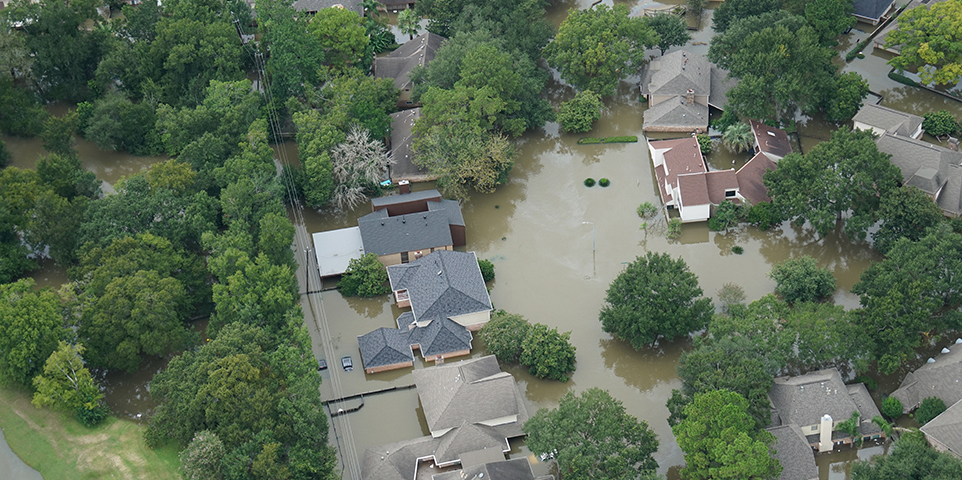MEMBERSHIP
AMPLIFY
EN ESPAÑOL
Connect With Us
- Popular search terms
- Automobile
- Home + Renters
- Claims
- Fraud
- Hurricane
- Popular Topics
- Automobile
- Home + Renters
- The Basics
- Disaster + Preparation
- Life Insurance

Flood damage is excluded under standard homeowners and renters insurance policies. However, flood coverage is available as a separate policy from the National Flood Insurance Program (NFIP), administered by the Federal Emergency Management Agency (FEMA), and from many private insurers. Industry observers note that many properties that should have flood coverage do not. According to a 2020 Triple-I Consumer poll, 27 percent of homeowners said they had flood insurance--a record high, but higher than NFIP estimates. Homeowners may not fundamentally understand what flood coverage is and how it works.
|
(1) Includes events from 1978 to December 31, 2021 as of March 9, 2022. Defined by the National Flood Insurance Program as an event that produces at least 1,500 paid losses. Stated in dollars when occurred.
Source: Federal Emergency Management Agency (FEMA) National Flood Insurance Program (NFIP) data; analysis courtesy of Aon.
($000)
|
(1) After reinsurance transactions, excludes state funds and premiums written by private insurers participating in the National Flood
Insurance Program's Write Your Own program.
(2) After dividends to policyholders. A drop in the combined ratio represents an improvement; an increase represents a deterioration.
(3) Calculated from unrounded numbers.
NA=Data not available.
Source: NAIC data, sourced from S&P Global Market Intelligence, Insurance Information Institute.
($000)
|
(1) Private flood includes both commercial and private residential coverage, primarily first-dollar standalone policies that cover the flood peril and excess flood. Excludes sewer/water backup and the crop flood peril.
(2) Before reinsurance transactions.
(3) Based on U.S. total, includes territories.
Source: NAIC data, sourced from S&P Global Market Intelligence, Insurance Information Institute.
|
(1) Residential structures less than four stories, including mobile homes, duplexes, manufactured homes and cabins.
(2) Apartments, condominiums and multi-unit dwellings.
(3) The risk categories are cumulative and increase in value from Category 1 to Category 5. Category 1 represents the higher risk of damage from a weak hurricane; Category 5 includes Categories 1 to 4 and the low risk of damage from a Category 5 hurricane.
Source: CoreLogic®, a property data and analytics company. May not be re-sold, republished or licensed to any other source without prior written permission from CoreLogic.
|
||||||||||||||||||||||||||||||
(1) Residential structures less than four stories, including mobile homes, duplexes, manufactured homes and cabins.
(2) Apartments, condominiums and multi-unit dwellings.
(3) The risk categories are cumulative and increase in value from extreme to moderate or greater. The moderate or greater wind risk level encompasses all four wind risk levels."
(4) Combines materials, equipment and labor, but does not include the value of the land or lot.
Source: CoreLogic®, a property data and analytics company.
|
||||||||||||||||||||||||||||||||||||||||||||||||||||||||||||||||||||||||||||||||||||||||||||||||||||||||||||||||||||||||||||||||||||||||||||||||||||||||||||||||||||||||||||||||||||||||||||||||||||||||||||||||||||||||||||||||||||||||||||||||||||||||||||||||||||||||||||||||||||||||||||||||
(1) Residential structures less than four stories, including mobile homes, duplexes, manufactured homes and cabins.
(2) Combines materials, equipment and labor, but does not include the value of the land or lot.
(3) Apartments, condominiums and multi-unit dwellings.
Source: CoreLogic®, a property data and analytics company.
|
(1) Rating based on the current statewide residential building code, the processes in place to ensure uniform code application, state and local enforcement programs, licensing and education of building officials, contractors, and
subcontractors.
Source: Insurance Institute for Business and Home Safety.